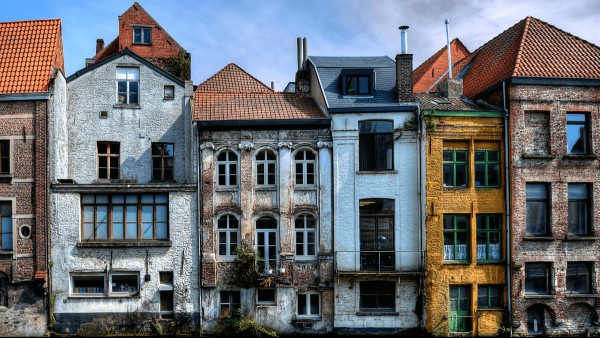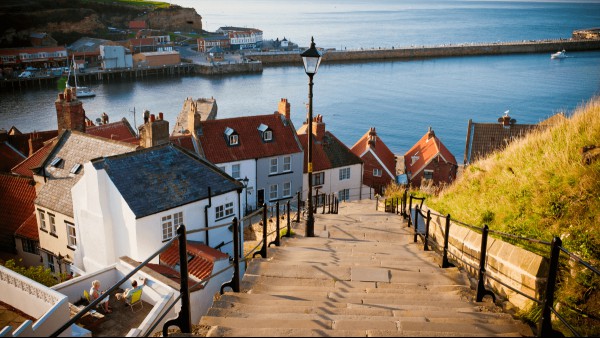Often described as a lilting brogue, the Irish accent is a fascinating variety of English full of outlandish slang and flowing, musical intonations. So what exactly is the Irish accent?
Well, despite its modest size, Ireland* offers up a cornucopia of local dialects — it’d be improper to talk about a single Irish accent. Indeed, linguists use the term Hiberno-English to refer to the lively bunch of Irish English varieties scattered throughout the island. While we can’t cover all of them, here’s a quick break down of different Irish accents.
*Ireland here is used to refer generally to the entire island and its local accents. Therefore, boundaries dividing the Republic of Ireland and Northern Ireland are temporarily set aside.
A Wee History Of Irish English
Anglo-Norman invaders first brought Old English (and French, for what it’s worth) to Ireland’s eastern coasts in the 12th century. English was initially confined to urban enclaves, mainly spoken in the area around Dublin known as “the Pale,” while Irish held strong throughout the rural countryside.
It wasn’t until the 1600s that the island’s linguistic landscape started to change drastically. Neighboring British rulers keen on cementing England’s power launched a slew of violent military campaigns to claim control over Ireland. The religiously and politically motivated legislation that followed stripped many Irish people of their land, faith, civil liberties and, unsurprisingly, their language.
Native Irish was continually pushed farther and farther west, while English fanned out from the east. Throughout the country, the use of Irish declined as the social stigma against it grew. The British ruling class eventually succeeded in establishing their own vernacular as the island’s chief operating language, and thus flourished the Irish English we know today.
The Irish Accent vs. Other English Accents
Several general traits distinguish Hiberno-English from different English varieties. On paper, Irish English shares many characteristics with its close neighbor, British English. Pronunciation, however, is another matter.
One feature that sets Irish English apart is its rhoticity, which, like American English, leaves no R unpronounced. Another difference is how spoken Ts sound more like CHs, so “two” sounds more like “chew.” Similarly, Ds sound more like Js to the non-Irish ear, so “idiot” comes out sounding like eejit.
Finally, vowels are generally flattened and pronounced with a more closed mouth, so that are becomes something akin to air.
What’s The Craic, Ireland?
Irish English also has a rich and unmistakable lexicon, so let’s look at a few examples. Aside from being an egg’s yellow center, the word yoke is used to refer to something you don’t know the proper name of (which is arguably less wacky than “thingamabob”). Calling someone bold says more about their bad behavior than courage (think cheeky in British English), and any inanimate object is most likely a “she,” not an “it.”
Don’t think we forgot about craic (yes, that’s pronounced “crack”), Ireland’s notorious, multipurpose slang term. In truth, Irish originally borrowed the Middle English word crack or crak (to brag loudly), gaelicized it and reintroduced it as craic. It’s now used liberally as a catchall expression in phrases like, “What’s the craic?” (Irish English for “Whassup?“).
After considering historic stigmas hurled at the Irish people and their native language, it’s not surprising to learn that Irish English has few loanwords from Irish. One holdover is the anglicized diminutive suffix –een (originally –ín), as in poitín/poteen, a potato moonshine, which literally translates to “small pot.”
Far more prevalent, though, is the impact Irish has on Irish English grammar and syntax. If you’re Irish and looking to impress people with your multilingual skills, you’d boast, “Look at all the languages I have!”
Oh, The Accents You’ll Hear
There’s a unique local dialect for each of Ireland’s 32 counties — that’s a lot for one moderately-sized island! So why is that? Though crossing the island may take only about 7 hours by car, Ireland is a historically poor, socially-stratified and rural land. Until recently, its inhabitants did not enjoy much freedom of mobility.
Many local dialects stayed isolated, as short-distance exchanges were limited — so much so that people could pinpoint the exact street somebody lived on based on how they talked! Let’s look at a few overarching categories: North, West/Southwest, East (a.k.a. Dublin) and Supraregional Irish.
The Northern Irish Accent & Ulster English
We’ll start up north with the Ulster region. Thanks to its proximity to neighboring Scotland, this part of the island has a dialect group that’s distinct even to the untrained ear. One such dialect found here has even become its own language: Ulster Scots.
What you’ll generally hear around these parts is more nasal-sounding and riddled with shorter diphthongs (“round” sounds more like rind). Gs are clipped from –ing words like speakin’, and “now” may get confused with “no.”
West And Southwest Dialects
Moving counterclockwise, we reach the West/Southwest dialects. Thanks to this region’s geographic distance from Great Britain and its higher concentration of Irish speakers, the influence Irish had on English is more evident here.
Though it’s a fairly big area, a few characteristics stand out: THs get lost to the wayside (What’s tuh craic?) and hearing someone say they’re from County Cork may have you thinking they’re actually from County Kark. Overall sentence pitch is higher, and down in Kerry, you’ll find some real fast talkers.
The Dublin Accents: A City Divided
Though it has Irish to thank for its name (Dubh Linn means “black pool”), Dublin has been Ireland’s English-speaking hub for the last 800 years. It’s here you’ll hear some of the most quintessential Irish English, such as the extra oy sound added to I’s (so “Irish” sounds more like Oy-rish).
Dublin has two starkly different dialect groups: Local Dublin and New Dublin English. According to Irish linguist Raymond Hickey, they also have some notable sociolinguistic differences. The working-class Local Dublin spoken in the north has been around for centuries and is often considered the “authentic” Dublin accent. It’s also noticeably less rhotic than other Irish dialects.
The southern New Dublin English, sometimes called D4 or Dartspeak, represents the posh-sounding vernacular found in trendier parts of the city. New Dublin speakers started distancing themselves from the older Local Dublin in the ‘90s. Their speech patterns adjusted to match the city’s rapid financial growth into an international tech-hub. This dialect has many features borrowed from other English varieties and stands in stark contrast to other local Irish dialects.
A Supraregional Irish English?
New Dublin is becoming increasingly mainstream and is heard more and more outside of the city. With today’s global interconnectivity and the heavy influence of American media, some fear that Irish dialects are flattening out. Hickey calls this theoretical, homogenized accent Supraregional Irish English.
Only time will tell the future of Irish English, but in the meantime, we can keep enjoying Irish accents in all their shapes and sizes.











